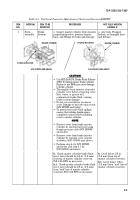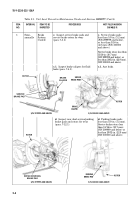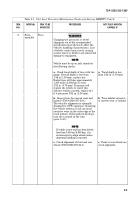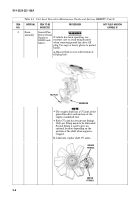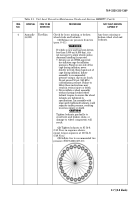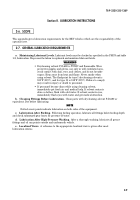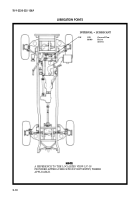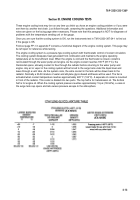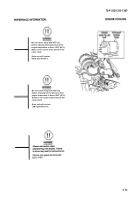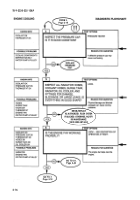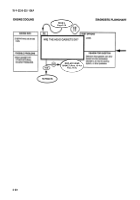TB-9-2320-335-13-P - Page 35 of 680
2-13
TB 9-2320-335-13&P
(A-A-52624)
(A-A-52624)
Section III. ENGINE COOLING TESTS
These engine cooling tests may be run any time you think you have an engine cooling problem or if you were
sent here by another test chain. Just follow the path, answering the questions. Additional information and
notes are given on the facing page when necessary. Please note that this paragraph is NOT for diagnoses of
problems with the temperature sending unit or the gauge.
Once you are sure that the cooling system is OK, run the instruments test in TM 9-2320-387-24-1 to find out
if the gauge is OK.
Fold-out page
FP-1
in appendix F contains a functional diagram of the engine cooling system. This page may
be left open for reference while testing.
The engine cooling system is a pressure-type cooling system with thermostatic control of coolant circulation.
The cooling system dissipates heat generated from combustion and maintains the engine operating
temperature at its most efficient level. When the engine is cold and the thermostat is closed, coolant is
recirculated through the water pump and engine. As the engine coolant reaches 190°F (87.7°C), the
thermostat opens, allowing coolant to flow through the radiator before returning to the water pump and
engine. Any air or vapor in the cooling system will be forced to the surge tank under the liquid level and
leave through a vent tube. As the system cools, the extra coolant in the tank will be drawn back to the
radiator. Normally a 50-50 mixture of water and ethylene glycol-based antifreeze will be used. The fan is
activated when coolant temperature reaches approximately 220° F (104°C). A separate oil cooler is mounted
in front of the radiator. This cooler is divided into two parts. The top half is for transmission oil. The bottom
half is for engine oil. When the cooling system pressure reaches approximately 15 psi (103 kPa), a valve in
the surge tank cap opens and lets excess pressure escape to the atmosphere.
Back to Top

